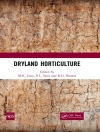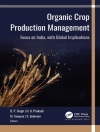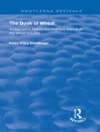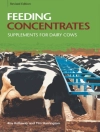This book reviews the production of bioplastic from various raw materials and recycling wastewater into useful bioproducts by bacteria. In addition, it also addresses the recent advancement in pest control in rice plants, different methods to analyse genotoxicity on soil samples and the effect of phytocompounds on acrylamide-induced toxicity in Drosophilla. Interestingly, this book also discusses mesoporous silica nanoparticles’ role as nanocarrier material for inhibiting the cancer cell, especially breast cancer and various biotechnological applications of marine fungal exopolysaccharides.
Tabela de Conteúdo
Chapter 1 Switching to bioplastics for sustaining our environment.- Chapter 2 Bioenergy production from wastewater resources using Clostridium species.- Chapter 3 Management of Phosphate in Domestic Wastewater Treatment Plants.- Chapter 4 Agricultural Waste: A potential solution to combat heavy metal toxicity.- Chapter 5 Current Trends and Emerging Technologies for Pest Control Management of Rice (Oryza sativa) Plants.- Chapter 6 Comet assay: is it a sensitive tool in ecogenotoxicology?.- Chapter 7 Drosophila melanogaster as a model to study Acrylamide induced toxicity and the effects of phytochemicals.- Chapter 8 Mesoporous Silica Nanoparticles are Nanocarrier for Drug Loading and Induces Cell Death in Breast Cancer.- Chapter 9 Insights on the Biotechnological applications of Marine Fungal Exopolysaccharides.
Sobre o autor
Dr. K. M. Gothandam is a Professor in the Department of Biotechnology, School of Bio Sciences and Technology, Vellore Institute of Technology, Vellore. His research interest includes Plant Molecular Biology, Plant and Microbial Metabolites, cancer biology, Environmental Biotechnology, etc. He has published many scientific research and review articles in international peer-reviewed journals and also refereed many journals of high impact.
Dr. Ramachandran Srinivasan is currently working as a National Post-Doctoral Fellow of Science and Education Research Board (SERB) in the Department of Genetic Engineering, SRM Institute of Science and Technology, Kattankulathur. He obtained his doctorate from Vellore Institute of Technology, Vellore. He did his postdoctoral research at International Centre for Genetic Engineering and Biotechnology (ICGEB), New Delhi. His field of interest includes metabolic engineering of algae as well as photosynthetic organisms towards stress tolerance, production of metabolites and other high value-added products. He is also an active team member of SERB and BIRAC funded projects.
Dr. Shivendu Ranjan is a senior research associate, at the University of Johannesburg, Johannesburg, South Africa. His research interests include biomaterials, nanotechnology, nanomedicine, and nanotoxicology. He has been elected as a Fellow of several reputed scientific societies e.g. The Linnean Society of London, Indian Chemical Society, Bose Science Society, and Indian Engineering Teachers Association. He is associate editor of Environmental Chemistry Letters.
Dr. Nandita Dasgupta has vast working experience in nanoscience and is working as Assistant Professor at the Department of Biotechnology, Institute of Engineering and Technology, Lucknow, India. She has worked on Mesenchymal stem cell-derived exosomes for the treatment of uveitis. She has successfully engineered micro-vehicles for model drug molecules. Her areas of interest include nanomaterial fabrication and its applications in medicine, food, environment, agriculture and biomedical. She is the associate editor of Environmental Chemistry Letters. She has received several awards and recognitions from different national and international organizations.
Dr. Eric Lichtfouse is an environmental chemist working at the University of Aix-Marseille, France. He has invented carbon-13 dating. He is teaching scientific writing and communication, and has published the book Scientific Writing for Impact Factors. He is the founder and Chief Editor of scientific journals and series in environmental chemistry and agriculture. He got the Analytical Chemistry Prize from the French Chemical Society, the Grand Prize of the Universities of Nancy and Metz, and a Journal Citation Award by the Essential Indicators.












